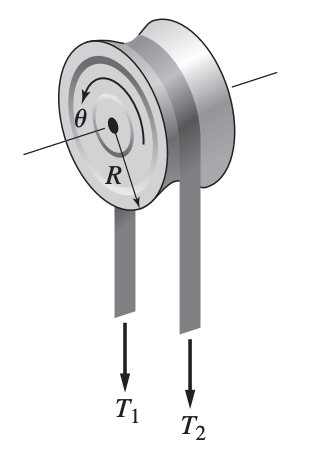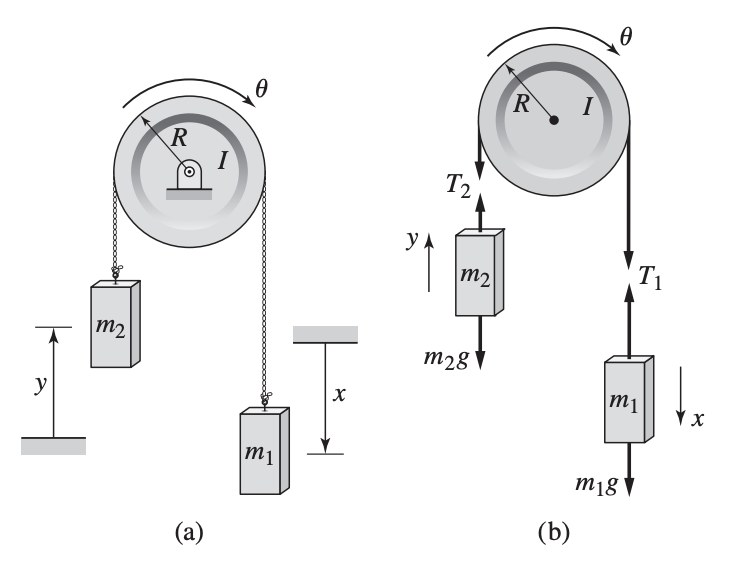Pulleys can be used to change the direction of an applied force or to amplify forces. Cords, ropes, chains, and cables drive the pulleys without slipping and are inextensible.
Let’s say we have a pulley of inertia whose center is fixed to a support.

Assume that the tension force are different on each side of the pulley. Then, applying gives:
Some implications of this:
- Tension forces are approximately equal if is negligible. This is satisfied if either the pulley rotates at a constant speed or if pulley inertia is negligible compared to other inertias the system.
- The force on the support at the pulley center is .
Energy
For the pulley below, if pulley inertia is negligible, then obviously will lift if . How does non-negligible inertia change this result?

- We define the coordinates as a function of time such that and .
- The system starts at rest, so we also have and .
- If the cables are inextensible, or , and
- No slip between the cable and the pulley means we have and .

All forces involved are conservative, including gravity, so mechanical energy is conserved.
At , we have .
At time , we have:
- The term for is positive since is increasing from the original
- The term for is negative since is decreasing from the original
For kinetic energy, we have:
We can use and . From , we can also use
From all of this, we have:
which gives:
Thus:
- If , then is lifted.
- If increases, decreases.
- In limit, if .